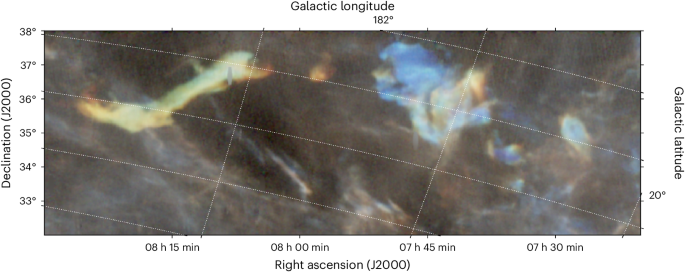- cross-posted to:
- [email protected]
- cross-posted to:
- [email protected]
In the article, researchers modeled the passage of the solar system through the galactic interstellar medium, components of which move at differing velocities and orbits.
They found that approximately 2-3 megayears ago, the solar system most likely entered a cloud of mainly cold hydrogen, and the density of the cloud was such that it should have considerably compressed the heliosphere (Sun’s bubble of radiation and fields). Earth would have been outside the heliosphere either permanently or periodically. Currently the heliosphere ends far beyond the most distant planet, at approximately 130 Earth-Sun distances (astronomical units).
This would have greatly subdued the influence of solar wind on Earth, at the same time exposing the planet to interstellar cosmic rays. It is further speculated that studies which analyze Earth climate during the aforementioned period may benefit from accounting for this possibility.
Researchers sought confirmation for their model from geological records and found some, in the isotope content of iron and plutonium in sediments: iron 60 and plutonium 244 aren’t produced by processes on Earth, so an influx would mean that solar wind no longer sufficed to beat back interstellar gas and dust (the latter containing radioisotopes from supernova explosions).
“By studying geological radioisotopes on Earth, we can learn about the past of the heliosphere. 60Fe is predominantly produced in supernova explosions and becomes trapped in interstellar dust grains. 60Fe has a half-life of 2.6 Myr, and 244Pu has a half-life of 80.7 Myr. 60Fe is not naturally produced on Earth, and so its presence is an indicator of supernova explosions within the last few (~10) million years. 244Pu is produced through the r-process that is thought to occur in neutron star mergers22. Evidence for the deposition of extraterrestrial 60Fe onto Earth has been found in deep-sea sediments and ferromanganese crusts between 1.7 and 3.2 Ma (refs. 23,24,25,26,27), in Antarctic snow [28] and in lunar samples [29]. The abundances were derived from new high-precision accelerator mass spectrometry measurements. The 244Pu/60Fe influx ratios are similar at ~2 Ma, and there is evidence of a second peak at ~7 Ma (refs. 23,24).”


